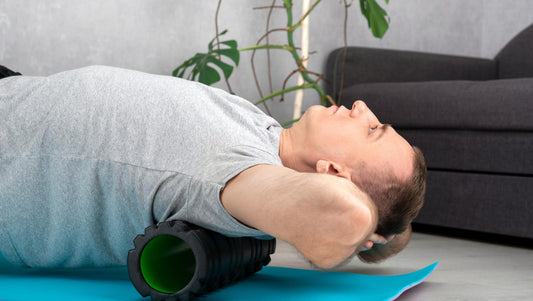Essential Yoga Studio Etiquette: How to Make Your Practice Respectful and Enjoyable
Yoga is not just about physical movement; it's also about creating a space of mindfulness, respect, and community. Whether you're a seasoned yogi or a beginner, understanding yoga studio etiquette ensures a positive experience for you and those around you.
We've put together a brief introductory guide to help you attend your first yoga class. You'll find some common sense tips for how to behave, what to bring, and what to expect in your first beginner class.
Now, all yoga instructors are unique, and all of the classes they teach are different, but these essentials will be a good benchmark for any studio experience.
Here are the essential guidelines to keep in mind.
Step One: Arrive Early
Arriving at least 10-15 minutes before the class starts allows you to settle in, set up your mat, and center yourself before the practice or class begins. Rushing in late can be disruptive to both yourself and the class. If you're running late, it’s better to skip the class than to disrupt the flow of other yogis.
Step Two: Turn Off Your Phone
This is one of the most important yoga etiquette rules. The yoga studio is a space for relaxation and focus, so silence your phone or leave it in your bag. Avoid checking messages or notifications during the session to maintain the peaceful environment for yourself and others.
Recording yoga sessions should only happen with the instructor's express permission. Be sure to check with all the other attendees to make sure they are all right being filmed as well.
Step Three: Wear Appropriate Clothing
Comfortable, form-fitting clothing allows you to move freely without distraction. Avoid wearing anything too loose or baggy, as it may interfere with your practice.
Most studios have a "no shoes on the mat" rule, so wear footwear that is easy to remove, or socks with grip on the bottom if you don't want to be barefoot.
Step Four: Respect Personal Space
Yoga involves physical movement, and some poses require space for others. Be mindful of your mat placement, ensuring you're not too close to someone else's. A good rule of thumb is to keep a mat's distance between you and your neighbor.
If the room is crowded and there is no choice but to line your mat up right next to a neighbors, be sure to keep your movements inside the rectangle of your mat.
Step Five: Maintain Quietness Before and After Class
When entering or exiting the yoga room, students should try to do so quietly, as others may be in the process of meditation or deep breathing. Maintain a calm and respectful tone when speaking, especially in the lobby or near the yoga space.
Step Six: Use Your Own Mat and Props
While many studios provide mats and props like blocks and straps, it’s a good idea to bring your own mat if possible. If you’re borrowing yoga mat or studio props, make sure to clean them after use. This keeps everything hygienic and ready for the next person.
Many people prefer to use their own equipment. You can buy something that is suitable for your heights or weight or skill level, and get increased resistance for your growing strength level.
Step Seven: Respect the Instructor’s Guidance
Follow the instructor’s cues, and avoid talking or distracting others during the class. This is basic yoga class etiquette. If you have an injury or need modifications, it’s a good idea to let the yoga teacher or the instructor know beforehand. This allows them to offer you personalized adjustments if needed.
Step Eight: Keep Your Practice to Yourself
Yoga is a personal practice, and it’s essential to focus inward rather than comparing yourself to others. Avoid the temptation to look at your neighbors or try to match their practice. Each body is different, and the goal of yoga journey is to honor your own.
Beginner yogis often have a lot of questions about how to hold their bodies, and when to change positions. Don't try to model yourself off other attendees of the class. Ask your instructor for assistance. They will be able to help you progress your practice at your speed, and make adjustments based on your own body's needs.
Step Nine: Respect the Studio’s Cleanliness
Help maintain a clean environment by wiping down your mat after class and returning props to their designated spaces. If you bring your own equipment, be sure to take some time to clean it as well. Body oils, lotion, sunscreen, and sweat can build up on these surfaces causing a rash.
If the studio provides sanitizing wipes or sprays, use them for your mat and any props you've used leave class. Cleanliness helps maintain a positive and respectful atmosphere.
Step Ten: Show Gratitude
At the end of class, when the instructor offers a closing gesture like “Namaste,” take a moment to express gratitude for your own yoga practice together, yourself, and the space around you. This is also a chance to thank the instructor if they’ve been particularly helpful before you leave class.
Step Eleven: Be Mindful of Strong Scents
Avoid wearing strong perfumes, colognes, or scented lotions that can interfere with others' experience, especially in a space where people are breathing deeply. Natural scents, like essential oils, are fine as long as they're subtle.
Wear clean clothes and keep good personal hygiene as well. Yoga studios are often close quarters, with yoga mats often side by side. Whatever you bring in with you will be shared by everyone.
Step Twelve: Mind Your Energy
Yoga is about more than just physical movement—it's also about cultivating mindfulness, calm, and positive energy.
If you are feeling off or in need of a mental reset, it’s okay to sit out a pose, but try not to disrupt the flow of the class with negative or restless energy. The entire class will pick up on your agitation. Leave it at home if you can, and bring only the desire for calm and wellness with you.
Conclusion
Yoga studios are sacred, quiet spaces that invite relaxation, focus, and community. By practicing proper etiquette, you help foster an environment of mutual respect, allowing everyone to get the most out of their practice. Whether you're new to yoga or have been practicing for years, these simple guidelines can help everyone enjoy their time on the mat, and they can be carried into more advanced lessons as well.
Once you have advanced in your yoga training you'll find that these twelve steps are a fantastic guide for the outside world as well. You can use the lessons you learn in your yoga practice in every aspect of your life. When you leave class, take that mindfulness and centeredness with you into your commute or chores.




















